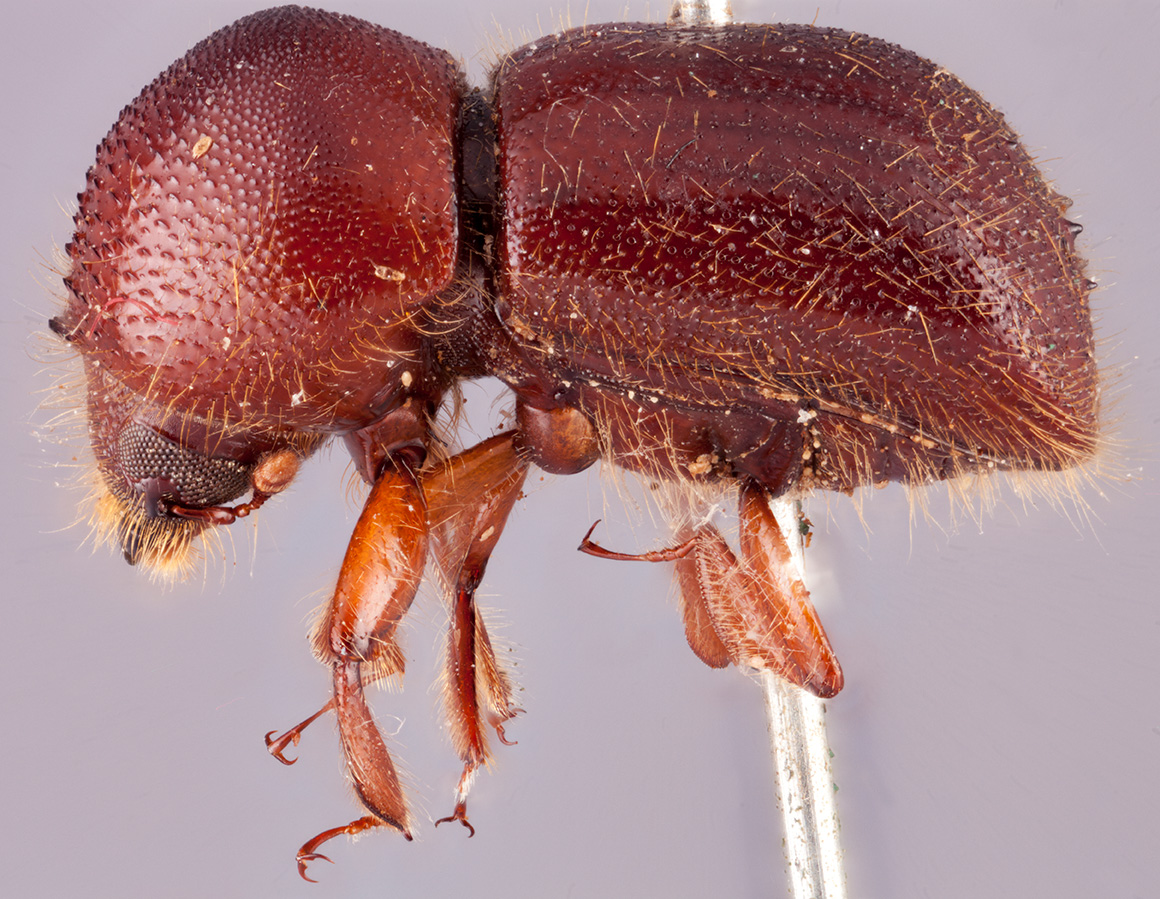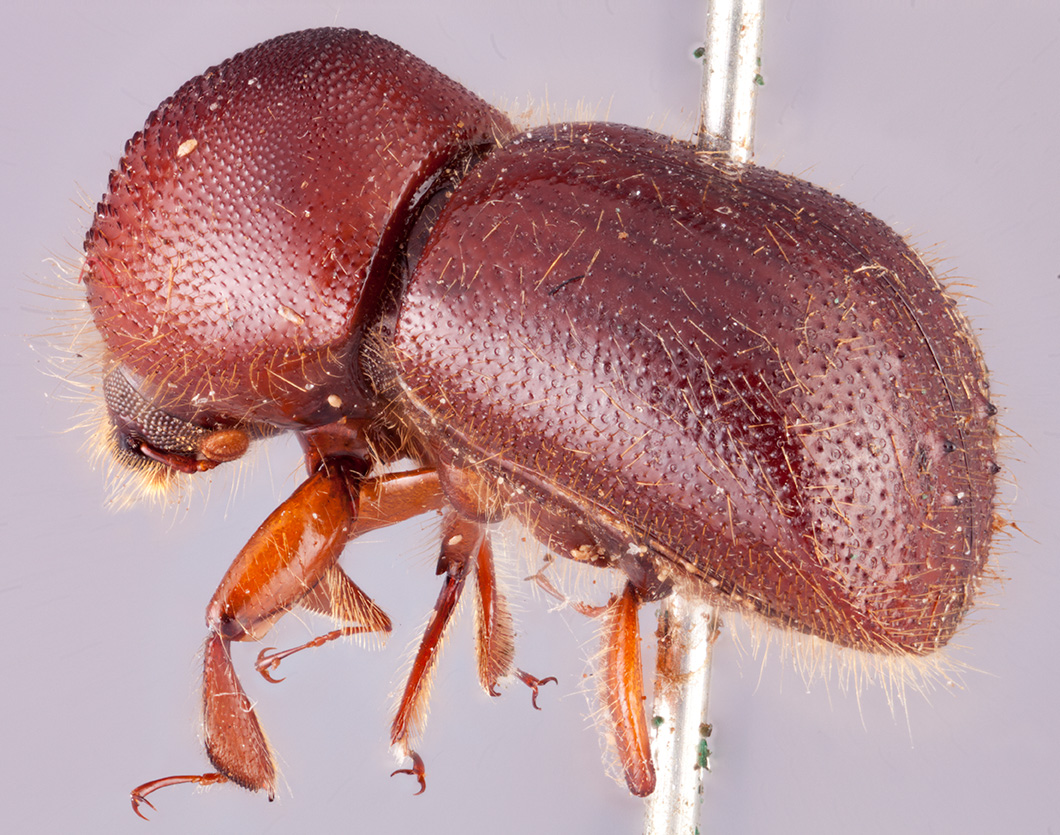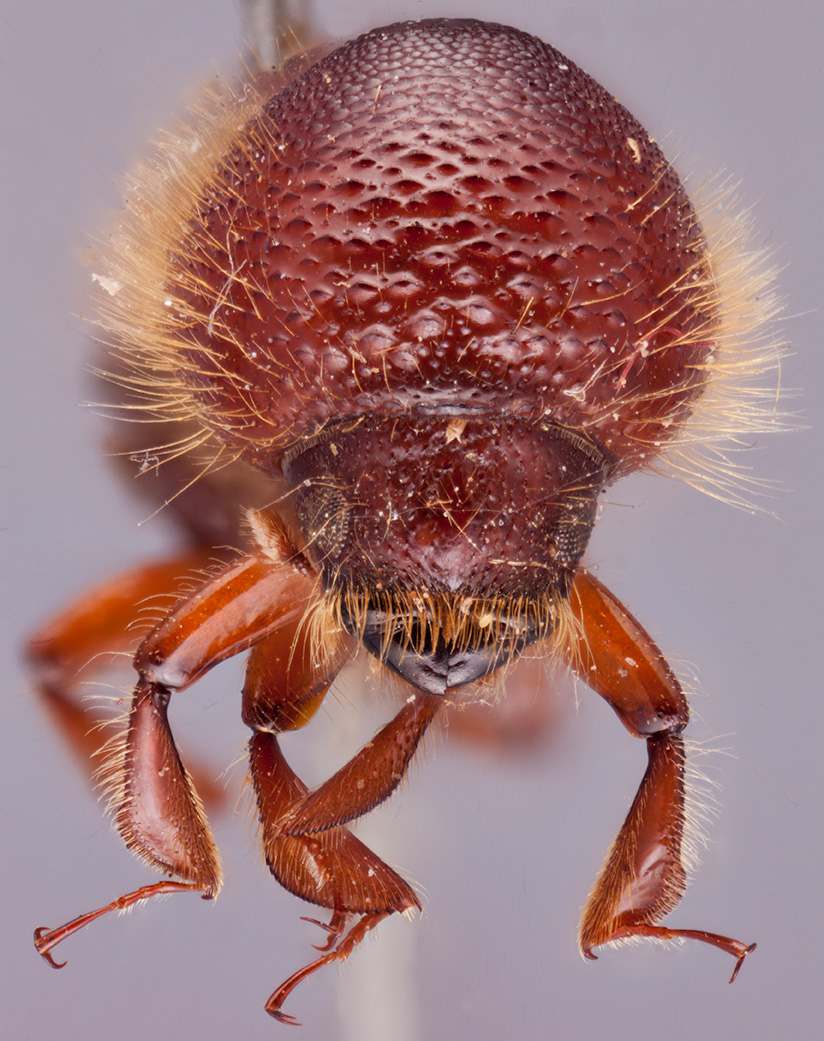Immanus sarawakensis
|
Immanus sarawakensis holotype lateral; R.K. Osborn |
|
Immanus sarawakensis holotype dorsal; R.K. Osborn |
|
Immanus sarawakensis holotype declivity; R.K. Osborn |
|
Immanus sarawakensis holotype frontal; R.K. Osborn |
Taxonomic history
Xyleborus sarawakensis Eggers, 1923: 176.
Ambrosiodmus sarawakensis (Eggers): Wood and Bright, 1992: 680.
Immanus sarawakensis (Eggers): Beaver et al., 2019: 385.
Diagnosis
The largest species occurring in Southeast Asia, 7.0−7.8 mm long (mean = 7.26 mm; n = 5); 1.97−2.05 times as long as wide. This species can be distinguished by the very large size, rounded elytralelytral:
pertaining to the elytra
declivitydeclivity:
downward slope of either the pronotum or elytra
 , densely setose body, declivitaldeclivital:
, densely setose body, declivitaldeclivital:
pertaining to the elytral declivity
interstriae 2 bearing a row of 2−3 denticlesdenticle:
a small tooth, the sides of which are equal and the tip is above the middle of the base and all declivitaldeclivital:
and all declivitaldeclivital:
pertaining to the elytral declivity
interstriae slightly elevated.
May be confused with
Immanus desectus, I. permarginatus
Distribution
East & West Malaysia, Thailand
Host plants
recorded from Lophopetalum (Celastraceae), Parinari (Chrysobalanaceae), Xanthophyllum (Polygalaceae), and an unidentified genus of Annonaceae (Browne 1961bBrowne 1961b:
Browne FG. 1961b. The biology of Malayan Scolytidae and Platypodidae. Malayan Forest Records 22: 1-255.)
DNA data
specimens not available for sequencing





